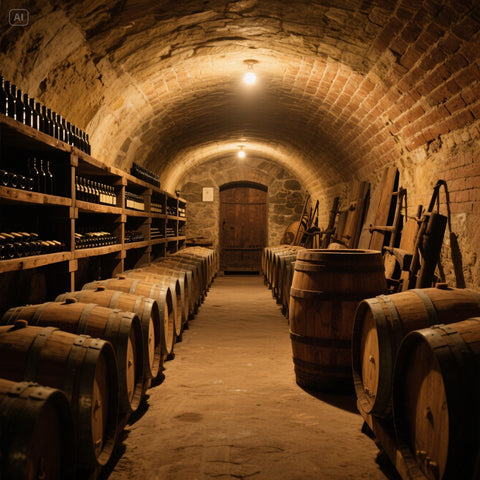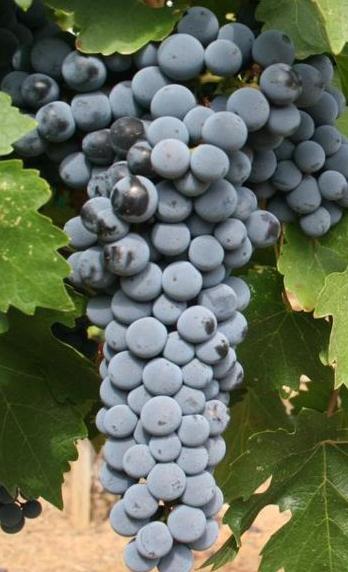Sparkling Pinot Noir has firmly established its place in Australia's collection of quality crafted wines. Created from the Pinot Noir grape, this effervescent wine offers a compelling blend of vibrant red fruit characteristics, nuanced earthy undertones, and a refreshing acidity. Unlike many sparkling wines dominated by white grape varietals, its inherent structure and flavour depth allow it to bridge the gap between a crisp aperitif and a more substantial culinary companion.
Australia's diverse wine regions, from the cool climates of Tasmania and the Yarra Valley to McLaren Vale, are producing world-class Sparkling Pinot Noir (including Rosé and Blanc de Noirs styles) that exemplify the grape's versatility. Understanding the art of pairing this sparkling wine with food can transform any Australian dining experience, whether it’s a casual barbecue, a sophisticated restaurant meal, or a festive celebration. This article will explore the distinctive characteristics of Australian Sparkling Pinot Noir, delve into its nuanced flavour profile, offer expert food pairing suggestions tailored to Australian cuisine and produce, and even touch upon its potential in the wine’s creation.
Key Features of Sparkling Pinot Noir
-
Versatile Flavour Profile: Offers a spectrum from delicate red berries (strawberry, cherry, raspberry) to more complex notes of mushroom, forest floor, and subtle spice, depending on Australian terroir and winemaking styles.
-
Balancing Acidity: Possesses a naturally high acidity, often pronounced in Australian cool-climate expressions, which cuts through rich foods and cleanses the palate, making it an excellent partner for a variety of dishes.
-
Fine Perlage (Bubbles): Typically exhibits elegant, persistent bubbles that enhance the sensory experience and contribute to its refreshing character, a hallmark of quality traditional method sparkling wines.
-
Structural Depth: The inherent characteristics of the Pinot Noir grape provide a subtle tannic structure and body, allowing it to stand up to more substantial food pairings than many lighter sparkling wines.
-
Méthode Traditionnelle Production: A significant portion of premium Australian Sparkling Pinot Noir is produced using the traditional method, involving a second fermentation in the bottle, which contributes to its complexity, fine mousse, and often brioche or autolytic notes.
-
Colour Spectrum: Can range from a vibrant pale salmon pink (Rosé) to a very light, almost clear, white (Blanc de Noirs), influencing both its visual appeal and subtle flavour nuances.
Flavour Profile: A Mix of Red Fruits, Earth, and Autolytic Notes
The allure of Australian Sparkling Pinot Noir lies in its intricate flavour profile, which is a direct reflection of the Pinot Noir grape's character, skillfully adapted to sparkling wine production.
Expect primary aromas and flavours of fresh red berries: wild strawberry, tart cherry, and ripe raspberry are commonly found, often accompanied by a delicate floral hint like rose petal. As the wine ages on its lees (spent yeast cells) during the méthode traditionnelle production, it often develops compelling secondary notes characteristic of premium sparkling wines. These can include hints of brioche, toasted nuts, sourdough, or a creamy texture, adding significant layers of complexity and richness.
Crucially, Pinot Noir also carries an inherent earthy or savoury undertone, sometimes described as forest floor, mushroom, or a subtle gamey note. This characteristic is particularly pronounced in wines from cooler Australian climates (like the Yarra Valley, McLaren Vale, or Tasmania) or those with extended lees contact.
This savoury edge is what truly distinguishes Sparkling Pinot Noir and renders it so adaptable to food. The refreshing acidity inherent in sparkling wine, combined with these red fruit, earthy, and sometimes toasty notes, creates a harmonious balance that can complement a wide array of dishes without overpowering them, offering a dynamic interplay of flavours and textures.
Suggested Food Pairings and Recipes in Australia
The versatility of Australian Sparkling Pinot Noir allows it to pair beautifully with diverse Australian cuisines, from modern bistro fare to fresh seafood. Its acidity and effervescence cut through richness, while its fruit and earthy notes complement a range of ingredients.
1. Australian Seafood and Shellfish
A quintessential pairing for many sparkling wines, and Australian Sparkling Pinot Noir, especially a Blanc de Noirs style, excels here. Its acidity and clean finish are perfect for cutting through the richness of butter or creamy sauces often accompanying premium Australian seafood.
-
Suggested Pairing: Freshly shucked Sydney Rock or Pacific Oysters (the wine's acidity and salinity complement perfectly), pan-seared King Prawns with garlic butter, grilled Barramundi with lemon and herbs, or delicate Bug Tail dishes.
-
Recipe Idea: Pan-Seared Moreton Bay Bug Tails with Lemon Myrtle Butter
-
Ingredients: 6 Moreton Bay bug tails (shelled, cleaned), 2 tbsp unsalted butter, 1 tbsp olive oil, juice of 1/2 lemon, 1/2 tsp dried lemon myrtle, salt and freshly ground black pepper.
-
Method: Pat bug tails dry. Heat butter and olive oil in a pan over medium-high heat until shimmering. Sear bug tails for 2-3 minutes per side until opaque and lightly golden. Remove from pan. Add lemon juice and lemon myrtle to the pan, swirl to deglaze. Season with salt and pepper. Pour sauce over bug tails and serve immediately with a wedge of fresh lime. The wine's crisp acidity will cut through the richness of the butter and complement the sweet, delicate flavour of the bugs, with the lemon myrtle echoing the wine's aromatic complexity.
2. Poultry and Game Birds
The subtle red fruit, savoury, and sometimes gamey notes of Sparkling Pinot Noir make it an excellent match for poultry, particularly roasted or smoked chicken, quail, or duck.
-
Suggested Pairing: Roasted free-range Barossa Valley chicken with bush herbs, duck confit, or a lightly smoked quail salad.
-
Recipe Idea: Smoked Chicken and Macadamia Nut Salad
-
Ingredients: 200g smoked chicken breast (shredded), 50g toasted macadamia nuts (roughly chopped), 1/2 cup rocket leaves, 1/2 cup baby spinach, 1/4 red onion (thinly sliced), 1/4 cup dried cranberries. For dressing: 3 tbsp olive oil, 1 tbsp apple cider vinegar, 1 tsp Dijon mustard, salt, pepper.
-
Method: Whisk dressing ingredients together. In a large bowl, combine shredded smoked chicken, macadamia nuts, rocket, spinach, red onion, and cranberries. Pour dressing over the salad and toss gently to coat. Serve immediately. The wine’s fruit and savoury notes will complement the smoked chicken and the creamy macadamia nuts, while its acidity provides a refreshing counterpoint to the richness.
3. Mushroom and Vegetarian Dishes
This is where the inherent earthy notes of Pinot Noir truly harmonise. The wine's characteristics echo the umami depth of mushrooms and rich vegetarian fare.
-
Suggested Pairing: Wild mushroom and truffle arancini, roasted field mushrooms with goats cheese, or a creamy pumpkin and sage risotto.
-
Recipe Idea: Thyme-Roasted Portobello Mushrooms with Goats Cheese and Balsamic Glaze
-
Ingredients: 4 large Portobello mushrooms, 2 tbsp olive oil, 2 sprigs fresh thyme, 2 cloves garlic (minced), 100g soft goat's cheese, balsamic glaze for drizzling, salt, pepper.
-
Method: Preheat oven to 180°C (160°C fan). Remove stems from mushrooms. Place caps gill-side up on a baking tray. Drizzle with olive oil, scatter with thyme leaves and minced garlic. Season with salt and pepper. Roast for 15-20 minutes until tender. Remove from oven, crumble goat's cheese over each mushroom, and return to oven for 5 minutes until cheese is warmed. Drizzle with balsamic glaze before serving. The wine's earthiness will echo the mushrooms, and its acidity will cut through the rich goats cheese.
4. Australian Charcuterie and Artisanal Cheeses
A diverse selection of cured meats and cheeses, particularly those from Australia's burgeoning artisanal producers, can be a fantastic match.
-
Suggested Pairing: Local charcuterie like prosciutto or salami from Northern Victoria, duck rillette, and a range of Australian cheeses from a creamy South Australian Brie to an aged Tasmanian cheddar.
-
The wine's acidity and fruit will cut through the richness of cured meats and complement the creaminess and complexity of many cheeses.
5. Light Desserts
While less common, some very dry (Brut) Sparkling Pinot Noir can surprisingly pair with certain desserts, particularly those featuring red berry fruits grown abundantly across Australia.
-
Suggested Pairing: Berry tarts (featuring Australian strawberries, blueberries, or raspberries), classic Pavlova with fresh mixed berries and passionfruit, or a simple summer fruit salad.
-
The wine's fruit notes will align with the dessert, and its acidity will provide a refreshing contrast to sweetness.
Considerations for Sparkling Wine Creation
While Sparkling Pinot Noir is predominantly enjoyed as a sophisticated wine, the base wine (still Pinot Noir) could theoretically be considered for inclusion in the creation of certain fruit-based liqueurs. However, it's important to note that this is a far less common practice than using neutral spirits or other fruit wine bases. The effervescence of the sparkling wine cannot be maintained in a stable liqueur format.
If one were to conceptualise a liqueur incorporating still Pinot Noir, it would likely involve enhancing its inherent red fruit characteristics. For instance, a small batch Pinot Noir-infused berry liqueur could be crafted by macerating high-quality Australian raspberries or cherries with a neutral grape spirit, then perhaps adding a reduction of still Pinot Noir wine for complexity, before sweetening.
The aim would be to create a rich, fruit-forward liqueur where the nuanced, elegant notes of the Pinot Noir grape provide an underlying structure and aromatic depth, rather than dominating the palate. Such a liqueur would be highly artisanal, designed for specific cocktail applications or as a unique digestif, celebrating the Australian fruit and grape bounty.
FAQs About Pairing Sparkling Pinot Noir
Q: Is Australian Sparkling Pinot Noir always rosé in colour?
A: No, Australian Sparkling Pinot Noir can be crafted as a Blanc de Noirs (French for "white from blacks"), which is a white sparkling wine made entirely from red Pinot Noir grapes. It can also be produced as a Rosé, which achieves its pink hue from brief skin contact during fermentation.
Q: Can Australian Sparkling Pinot Noir be paired with popular Australian barbecue fare?
A: Absolutely, for lighter barbecue options. Its acidity cuts through fat, making it suitable for grilled chicken, premium sausages, or even grilled seafood. For heavier red meats like a thick steak, a still red wine would typically be a better match.
Q: What's the ideal serving temperature for Australian Sparkling Pinot Noir?
A: Like most premium sparkling wines, Australian Sparkling Pinot Noir is best served well-chilled, typically between 6-8°C (43-46°F). This temperature range allows its delicate aromas, fine bubbles, and crisp acidity to be fully appreciated.
Q: How does an "Extra Brut" or "Brut Nature" style of Australian Sparkling Pinot Noir impact food pairing?
A: These styles have very low or no residual sugar, making them extremely dry. This dryness enhances their palate-cleansing ability, making them exceptional with rich, fatty foods like oysters, cured meats, or even fish and chips, as they cut through the richness without adding sweetness.
Q: Which Australian wine regions are best known for Sparkling Pinot Noir?
A: Australia's cooler climate regions are renowned for producing high-quality Sparkling Pinot Noir. Key regions include Tasmania, the Yarra Valley (Victoria), the McLaren Vale (South Australia), and parts of the Limestone Coast (South Australia/Victoria). These regions provide the ideal conditions for Pinot Noir grapes to develop the necessary acidity and delicate flavours for sparkling wine production.




Comments (0)
There are no comments for this article. Be the first one to leave a message!